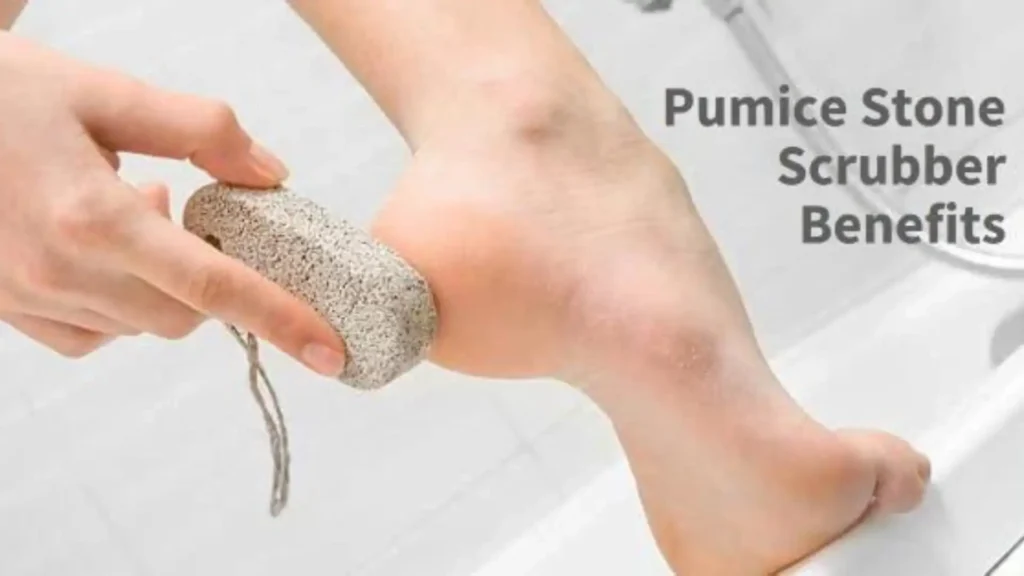As the days get warmer and we transition into sandal season, it’s time to give our feet the attention they deserve. One of the best tools to help you achieve soft, smooth skin is the pumice stone. This simple, natural exfoliation tool can work wonders on rough, callused skin, leaving your feet (and hands) feeling rejuvenated and ready to show off. In this guide, we’ll explore everything you need to know about pumice stones, from what they are to how to use them effectively.
What is a Pumice Stone?
A pumice stone is a type of volcanic rock that forms when lava and water mix. This combination creates a lightweight, porous, and abrasive rock that has been used for centuries as a natural exfoliation tool. The unique texture of pumice stones makes them perfect for removing dead skin cells and smoothing out tough, callused areas, especially on the feet and hands.
Benefits of Using a Pumice Stone
Smooths and Softens Skin Exfoliating with a pumice stone is an effective way to remove dead skin cells, which can accumulate and cause your skin to feel rough and dry. Regular use of a pumice stone leaves your skin feeling softer and smoother, and helps your moisturizer penetrate better, enhancing its effectiveness.
Increases Radiance By removing old, dead skin cells, a pumice stone reveals the fresh, new skin underneath. This can brighten your complexion and give your skin a healthy, radiant glow.
Improves Overall Comfort Thick calluses can cause discomfort, especially when walking. Using a pumice stone to reduce these calluses can alleviate pain and make your feet more comfortable.
Risks of Using a Pumice Stone
Skin Irritation and Inflammation Applying too much pressure or using a pumice stone incorrectly can irritate your skin, causing redness, inflammation, and even pain. To prevent this, always use gentle pressure and follow proper exfoliation techniques.
Infection Risk It’s essential to keep your pumice stone clean to avoid infections. Sharing pumice stones or not cleaning them properly can spread bacteria and fungus. People with diabetes or neuropathy should be especially cautious, as they may not feel pain if they over-exfoliate, increasing their risk of infection.
How to Use a Pumice Stone
Pre-Soak Your Skin Before using a stone, soak the area you plan to exfoliate (typically your feet or hands) in warm water for 5 to 15 minutes. This softens the skin and makes the exfoliation process more effective. Your skin should be soft but not wrinkled from over-soaking.
Rinse Your Pumice Stone Wet the stone before use to prevent it from dragging on your skin. As you exfoliate, rinse the stone occasionally to remove the buildup of dead skin.
Exfoliate Gently Using light to moderate pressure, move the stone in a circular motion over the callused areas. One to two minutes is usually enough to remove dead skin. Stop if you feel any pain or sensitivity.
Rinse Off Loose Skin After exfoliating, rinse the area to wash away any loose dead skin cells, revealing the smooth skin underneath.
Moisturize Hydrate your skin immediately after using a stone. Apply a quality moisturizer to lock in moisture and support your skin barrier.
Clean Your Pumice Stone After use, rinse the stone with water and a bit of soap to remove dead skin. You can also boil it to ensure it’s completely clean. Let it dry in a clean, dry area. Avoid sharing your pumice stone to prevent the spread of bacteria and fungus.
Best Practices and Tips
Frequency of Use How often you use a stone depends on your skin type and needs. Generally, once a week is sufficient for most people. Avoid over-exfoliating, which can irritate your skin.
Alternative Products For more sensitive areas like elbows and knees, consider using products that contain pumice particles instead of a pumice stone. These products offer gentle exfoliation without the risk of irritation.
Consulting a Dermatologist If you have any skin conditions or concerns, consult a dermatologist before using a pumice stone. They can recommend the best exfoliation methods for your skin type and needs.
Conclusion
Pumice stones are a fantastic, natural tool for exfoliating callused areas on your feet and hands. With proper use, they can leave your skin feeling soft, smooth, and ready for summer. Remember to use gentle pressure, clean your pumice stone regularly, and moisturize after exfoliation to achieve the best results. By incorporating a pumice stone into your skincare routine, you can enjoy beautiful, rejuvenated skin all year round.
FAQs
Can I use a stone on my face? No, it’s not recommended to use a stone on your face as the skin there is too delicate and can easily become irritated.
How do I know if I’m using too much pressure? If you experience any pain, redness, or sensitivity, you’re likely using too much pressure. Use gentle, circular motions and stop if you feel any discomfort.
How often should I replace my stone? Replace your stone when it starts to wear down or becomes too smooth to be effective. This typically happens every few months with regular use.
By following these tips and guidelines, you can safely and effectively use a pumice to keep your skin soft, smooth, and healthy.
Discover more skincare trends:
- 10 Ear Tattoos That Look More Eye-Catching Than a Pair of Fancy Earrings
- How to remove temporary tattoos without damaging your skin with makeup remover?
- An Artist Does Breathtaking Tattoos That Look Like They’re Straight Out of a Fairytale
- Follow us on Facebook
- Follow us on Pinterest





